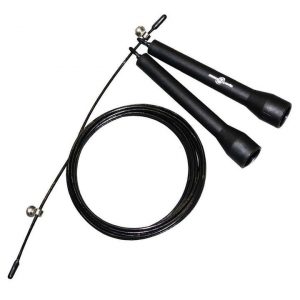Características del Producto
| Peso | 117 kg |
|---|---|
| Dimensiones | 233 × 98 × 44 cm |
| Peso Máximo de Usuario | 130 Kg |
| Pegable | SI |
| Inclinación | 0 – 15% |
| Marca | Sport Fitness |
| Precio | 4.000.000-6.000.000 |
| Velocidad Máxima | 20Km |
Marca: Sport Fitness
Original price was: $6.719.397.$5.375.517Current price is: $5.375.517. IVA
Descripción:
| Peso | 117 kg |
|---|---|
| Dimensiones | 233 × 98 × 44 cm |
| Peso Máximo de Usuario | 130 Kg |
| Pegable | SI |
| Inclinación | 0 – 15% |
| Marca | Sport Fitness |
| Precio | 4.000.000-6.000.000 |
| Velocidad Máxima | 20Km |
Marca: Sport Fitness
La banda trotadora Montpellier de Sport Fitness es un equipo Cardiovascular que cuida el corazón. Además, fortalece los pulmones, aumenta la energía y controla los niveles de colesterol.
Es ideal ya que ahorra espacio al ser plegable.
La pintura de la banda trotadora Montpellier de Sport Fitness es muy resistente por ser electrostática.
Cuenta con un motor robusto (DC 2.5 HP.). Es la 4×4 de las trotadoras.
Puedes correr, trotar o caminar, ya que su velocidad varía entre 1.0km/h y 20 km/h.
La trotadora Montpellier de Sport Fitness se adapta a tu estado físico y a la intensidad con la que quieras entrenar. Ya que su inclinación varía entre 0% – 15%.
Tiene una pantalla 10” TFT COLOR SCREEN. Esta brinda información relevante para monitorear el cuerpo y las rutinas. Por ejemplo, velocidad, distancia recorrida, tiempo ejercitándose, calorías quemadas, ritmo cardíaco e inclinación.
La banda trotadora Montpellier es perfecta por su conexión WIFI. También viene con 15 programas preestablecidos para entrenar, U1-U3 y Body Fat Program.
Puedes escuchar música, podcasts o lo que desees a través de 2 Altavoces incorporados – conexión Mp3.
Tiene conexión con Youtube, Netflix y Wifi para ver tu videos o películas favoritas.
Se puede conectar en cualquier parte ya que su conexión es de 110 Voltios.
Otras Características de la banda trotadora Montpellier de Sport Fitness
El peso máximo del usuario debe ser 130 Kg.
Área útil. Largo 141 cm x Ancho 53 cm.
Sus medidas son: Largo 190 cm x Alto 150.5 cm x Ancho 91.5 cm.
*SE REQUIERE ENSAMBLE
Conoce una receta para que prepares después de tu entrenamiento. Puedes verla haciendo clic aquí
Puedes seguirnos en Instagram, encuéntranos como @Tienda_Sportfitness



Debes acceder para publicar una reseña.
Luis Alberto cruz –
La verdad es excelente muy amplia, y gracias a su pantalla nos permite ejercitarnos de una manera muy agradable solo que por ahora no la estoy usando ya que por problemas en la targeta está fuera de funcionamiento y este mensaje es con ese motivo aver si ustedes me podrían ayudar a conseguir una nueva gracias
Paola –
Hola, esperamos te encuentres super bien.
Para solicitar repuestos debes llenar el siguiente formulario https://tienda-sportfitness.com/repuestos/ Luego de diligenciar este formulario el área encargada se contactara contigo para iniciar la gestión y confirmarte si tenemos disponibilidad el costo y el valor del envio.